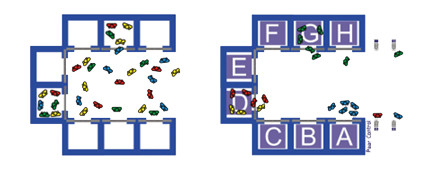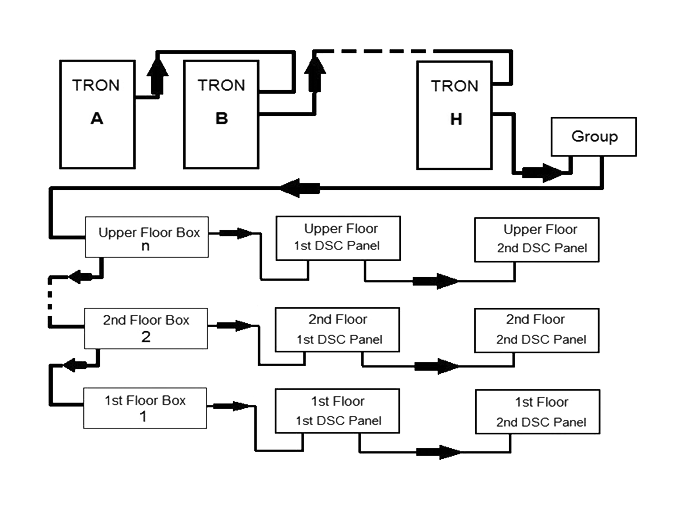In conventional group systems (duplex, etc.), discrepancies in the number of floors caused operational inefficiencies. These issues are resolved using the Destination Control System. In high-traffic, high-rise buildings such as hospitals, organizations, offices, hotels, commercial centers, and towers, the traffic-streamlining efficiency of this system compared to conventional elevators is significantly noticeable.
By selecting their destination via floor button panels, the system guides passengers to the most suitable elevator for faster arrival at their destination.
in systems such as Down Collective (Collective Selective), when the first elevator stops at the lobby, the waiting crowd moves toward it, and once its capacity is filled, the elevator departs. Due to passengers having different destinations, the elevator stops at all selected floors to drop passengers off at their destinations.
With the Destination Control System, passengers select their destination before heading to the elevator. Based on the chosen destination, the system directs passengers to a designated elevator. Given passenger congestion, a limited number of other passengers with the same destination may also be directed to that elevator. In this case, all passengers in that elevator share the same destination.

For example, as shown in the images, assume destinations are marked by colors: blue for floor 5, red for floor 10, yellow for floor 14, and green for floor 20. As illustrated, in conventional systems, passengers entering the cabin have different destinations, requiring the elevator to stop at all selected floors. However, in the Destination Control System, passengers enter their destination via the lobby’s button panel and are guided by the display to a specific elevator. At this point, all passengers assigned to that elevator share the same destination. Consequently, with one movement and stop, passengers reach their destinations much faster than in conventional systems.
